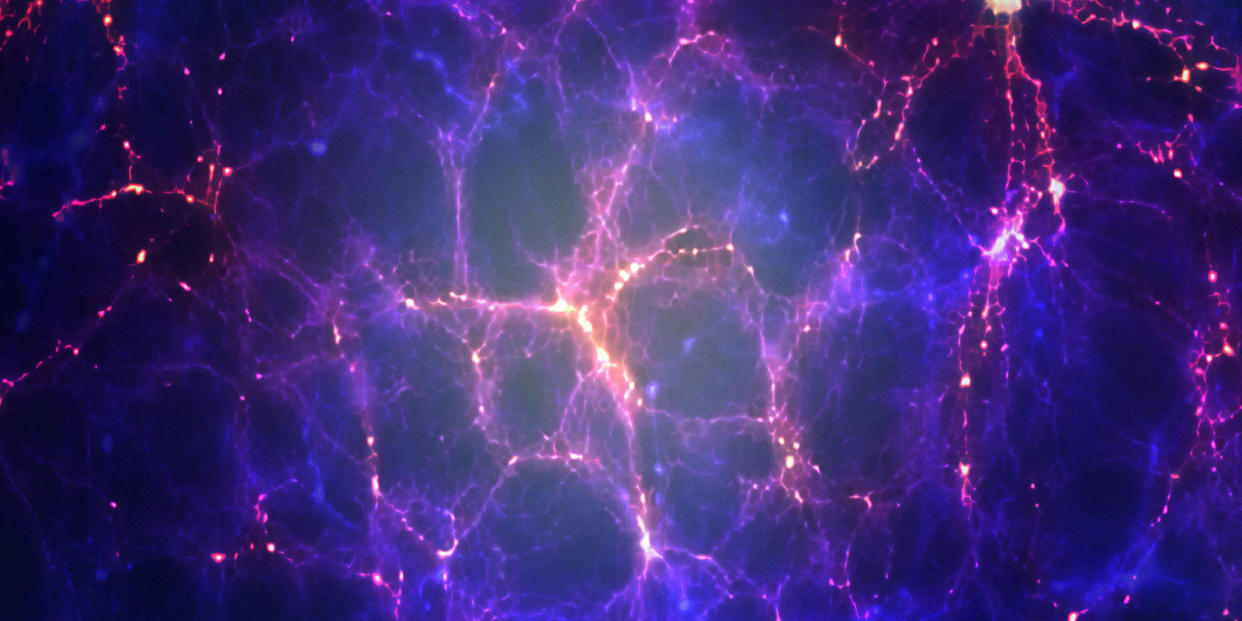Researchers Find Universe's 'Missing Matter'

The universe huge and stretches mind-blowingly far , so one of the best ways we have to find out more about it is to recreate the universe inside a computer and study that simulation. Studying simulations is how we've learned the structure of dark matter, for instance. But those simulations also predict that all the galaxies in the universe should be connected with long filaments of regular matter that, until recently, we'd never observed. Now, two teams of scientists finally succeeded in spotting those filaments, proving that our universe simulations are correct.
For decades now, the simulations we've run have predicted the existence of long strands of baryons-particles like protons and neutrons-in the space between galaxies, connecting them together. Our current theories of how the universe formed predict ten times as many baryons as we can see inside the galaxies, and scientists believe these filaments hold the remaining 90 percent.
That's why detecting these filaments is so important. If those filaments aren't there, or are smaller or larger than we predict, then something might be wrong with the theories. The problem is that the filaments are so sparse and cold that they're too faint to see them with any of our telescopes.
So two groups of researchers, working independently, came up with a clever solution: Instead of looking at the space between one pair of galaxies, what if they looked at the space between every pair of galaxies at the same time? They did this by taking hundreds of thousands of galaxy pair images from the Planck satellite and layering them on top of each other, rotating and scaling each pair of galaxies so they all lined up.
By adding hundreds of thousands of images together, they amplified the incredibly dim signal from the filaments, making them bright enough to detect. According to that signal, not only are the baryons there, but there are as many as predicted by theory; enough to clump together and form filaments, but not quite enough to make them visible to ordinary telescopes.
While our theories and simulations might still be wrong in other ways, this is good confirmation that we're on the right track. If our simulations can predict baryon filaments this accurately, they should be able to predict dark matter with just as much precision. That will make the search to actually find it a little easier.
Source: arXiv and arXiv via New Scientist
You Might Also Like

